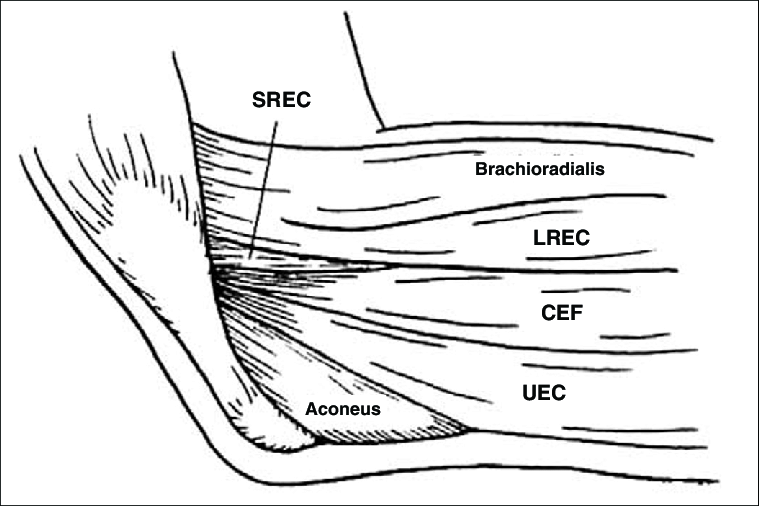Lateral Epicondylitis
content of this page
1- Introduction
2- Anatomical Overview
3- Causes
4- Treatment
Introduction

Anatomical Overview
Elbow tendinitis (“tennis elbow”) is a painful musculoskeletal condition that may follow repetitive use of the superficial extensor muscles of the forearm. Pain is felt over the lateral epicondyle and radiates down the posterior surface of the forearm. People with elbow tendinitis often feel pain when they open a door or lift a glass. Repeated forceful flexion and extension of the wrist strain the attachment of the common extensor tendon, producing inflammation of the periosteum of the lateral epicondyle (lateral epicondylitis).

Causes
- Repetitive Motion: Engaging in repetitive activities that involve gripping, twisting, or lifting can strain the muscles and tendons in the forearm, leading to micro-tears and inflammation. This is common in occupations or sports that require repetitive arm movements, such as painting, carpentry, typing, playing musical instruments, or sports like tennis and golf.
- Poor Technique: Using improper technique during activities can place excessive stress on the tendons around the elbow. For example, in tennis, using incorrect backhand or serve technique can contribute to the development of tennis elbow.
- Muscle Imbalance: Weakness or imbalance in the muscles of the forearm, wrist, and hand can lead to increased strain on the tendons and predispose individuals to lateral epicondylitis.
- Age: While tennis elbow can affect individuals of any age, it is more common in adults between the ages of 30 and 50, possibly due to age-related changes in tendon strength and elasticity.
- Overload or Sudden Increase in Activity: Engaging in activities that involve repetitive arm motions without proper conditioning or gradually increasing the intensity can overload the tendons and lead to injury.
- Occupational Factors: Certain occupations that involve repetitive arm movements or forceful gripping, such as construction work, plumbing, or cooking, can increase the risk of developing lateral epicondylitis.
- Other Factors: Factors such as smoking, obesity, and poor overall physical conditioning may also contribute to the development or exacerbation of tennis elbow by impairing tendon healing and increasing inflammation.
Treatment of Lateral Epicondylitis
- Rest: Resting the affected arm and avoiding activities that worsen the pain is essential to allow the inflammation to subside.
- Ice Therapy: Applying ice packs to the affected area can help reduce inflammation and alleviate pain. Ice should be applied for about 15-20 minutes several times a day.
- Pain Relief Medications: Over-the-counter pain relievers like ibuprofen or naproxen can help reduce pain and inflammation.
- Physical Therapy: A physical therapist can design a tailored exercise program to stretch and strengthen the muscles around the elbow, improving flexibility and reducing strain on the affected tendon.
- Bracing or Splinting: Wearing a brace or splint can provide support to the affected tendon and reduce strain during activities.
Surgery: In rare cases where conservative treatments fail to provide relief, surgical intervention may be considered to remove damaged tissue or reattach tendons.